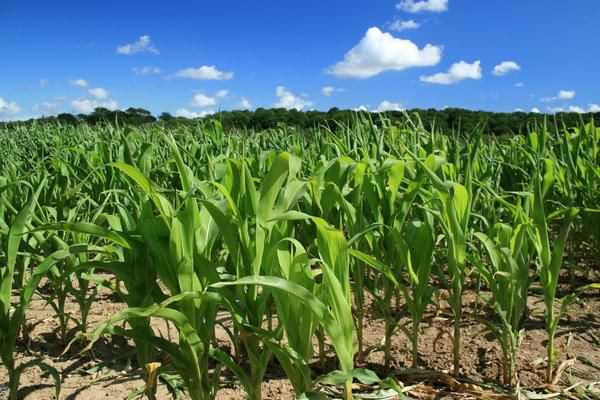By Phephile Motau
As the ploughing season approaches, over 24000 maize farmers in Eswatini face an imminent fertiliser shortage crisis due to diminishing supply and soaring prices. This, together with the increase in prices of energy and other agricultural inputs emanate from the Russian-Ukraine conflict and according to agricultural economists, this will lead to increased food production costs and a possible global food crisis.

According to the World Bank, the fertilizer shortage has added to the growing concerns about the Ukraine war’s impact on the price and scarcity of certain basic foods.
It was reported that combined, Russia and Belarus provide about 40 per cent of the world’s exports of potash, a common name given to a group of minerals and chemicals that contain potassium (chemical symbol K), which is a basic nutrient for plants and an important ingredient in fertilizer
Russia’s exports were hit by sanctions imposed by the US and its European allies. Further, in February, a major Belarus producer declared force majeure — a statement that it would not be able to uphold its contracts due to forces beyond its control.
Capacity Development Manager of the Eswatini National Agricultural Union (ENAU), Nokuphiwa Sithole, said the country is battling with both the escalating prices of fertiliser and supply disruptions. She recalled that last year, a bag of fertiliser cost around E400, but now, it costs E1 100.
Sithole said even during the last ploughing season, they already had challenges with fertiliser supply and this would be worse with the ongoing Russian/Ukraine conflict.
Sithole explained that when the government announced that farmers should start paying for the farm input under the government subsidy programme, farmers did as advised. However, when agro-dealers went out to purchase the required inputs, they were confronted with high prices.
She went on to say that for the agro-dealers to buy stock, they first need to know the number of people who will require their supplies. she said when prices increased, the agro-dealers struggled to meet the demand of the farmers because the money was not enough.
“Farmers could not get the exact required input quantity per hectare,” she said.
Sithole further mentioned that fertilizer suppliers were not able to source enough stock because of the supply chain disruptions. She said the whole of the Southern African Development Community (SADC) was competing to get fertiliser from the limited supply.
She said farmers were compelled to use fertiliser brands which they were not familiar with because they just needed fertiliser when ploughing their fields.
Sithole said besides that they were using fertilizer brands they were not familiar with, and the suppliers struggled to meet the demand.
In her observation, because of the Russian – Ukraine conflict, one of the ingredients used to make fertiliser was scarce and it had become very expensive for it to be easily imported into the country.
In her view, there are two ways to deal with the fertilizer shortage challenge; one is short term and the other is long-term.
She said the first one would be for farmers to prepare themselves well before the rainy season and buy inputs on time.
“Farmers should pay for the input subsidy programme immediately because that will enable agro-dealers to determine the amount of stock that would be needed by the farmers on time,” she said
Sithole said agro-dealers also had their own processes which include sourcing of funds, and hence it was important for farmers to pay on time. She said this would also help them with sourcing inputs from alternative places if the need arises.
She said the long-term solution would be for the country to have its own fertiliser manufacturing factory and stop relying on imports at all times.
Sithole said this was very important if Eswatini is really destined to improve food security.
She said the country could, for example, have its own fertiliser blending plant, where the fertilizer could be mixed on a large scale. She made an example with Botswana which she said was already doing the same.
Sithole said the country could also invest in research to investigate alternatives to using the usual fertiliser, which could include making its own organic fertiliser, and if this could be good for the country.
“We need to invest in research on how we could deal with the prevailing challenge and come up with solutions which would be sustainable for the country.
In 2020, the country was promised a fertiliser processing factory. It was announced that Triomf had made an estimated investment of E131 million in Eswatini which was supposed to be implemented in two phases. It was said the first phase would focus on the development, installation and testing of the fertilizer blending plant, and Phase II, it would involve capacity building in line with the company’s strategic objectives. It was further stated that the fertilizer that would be produced by Triomf would give farmers an opportunity to expand their yield potential and profitability at a commercial scale.
When asked for an update about the Triomf investment progress, the Minister of Commerce, Industry and Trade, Manqoba Khumalo, said the project was still ongoing but had some glitches.
“The directors have assured us that they have overcome these glitches and will resume production in a couple of months. I’m not at liberty to share the nature of the glitches,” Khumalo said.
Meanwhile, the government announced an increase in the amount they paid for subsidies, due to the escalating prices of inputs.
The Minister of Agriculture Jabulani Mabuza announced that farmers were expected to contribute 35 per cent and the government will contribute the 65 per cent balance.
Mabuza also said farmers could also pay for a maximum of three hectares compared to the one-hectare maximum that was used in the past years.
For maize, the farmers are paying E4 900, and the government will contribute E9 100, while for beans, farmers will pay E4 200 while the government will pay E7 800 and for sorghum, the farmer will contribute E2 450, and the government will pay E4 550.
The minister said s a result of the fuel price increase, the tractor hour would cost E300 from E270




